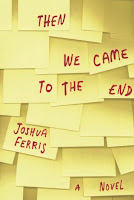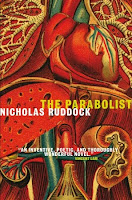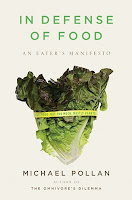 Let me start off with a confession, as so many of my book reviews do (which leads me to ask one simple question: does anyone actually care about what I confess?), I hated The Time Traveler’s Wife. I found Niffenegger’s book to be slightly absurd, overwritten, and ridiculously implausible. In a way, I guess you could say I wasn’t a fan of supernatural romance.
Let me start off with a confession, as so many of my book reviews do (which leads me to ask one simple question: does anyone actually care about what I confess?), I hated The Time Traveler’s Wife. I found Niffenegger’s book to be slightly absurd, overwritten, and ridiculously implausible. In a way, I guess you could say I wasn’t a fan of supernatural romance.
With that in mind, I have no idea why I wanted to read Her Fearful Symmetry in the first place. I mean, the book got terrible reviews, and even the somewhat kind piece by Emma Donoghue in the Globe hits upon the novel’s central flaw: that too much symmetry makes a bit of a mess of a book. Yet, I was utterly intrigued. And, last night I stayed up way, way passed my bedtime to finish it. In fact, I turned off the light, closed my eyes, tossed and turned for a bit, thought about the book, got up, turned the light BACK ON, and then read the last 150 pages. What kind of a book does that?
The story opens as Elspeth Noblin dies from cancer. Her ravaged body is held by her lover of many years, Robert, and it’s sad. A tad cliched, terribly overwritten, but sad nonetheless (all of the things that annoyed me about the first book). But I was so engrossed by the sheer force of Niffenegger’s story that I almost missed my bus. And buses in Toronto are loud. And I was standing rightnext to the stop.
Elspeth leaves the bulk of her estate to her nieces, the daughters of her twin sister Edie, with whom she hasn’t spoken in over 20 years. It’s not a straightforward kind of will, for what kind of novel would include such boring, plot-sucking details as that, and Elspeth demands: a) that the twins, Julia and Valentina (ugh, that name, ugh) must live in her flat for one year and b) their parents, Edie and Jack, are never to set foot in the apartment.
The girls, who are mirror twins, are looking for an adventure. Julia, aggressive, demanding, controlling, pretty much makes decisions on behalf of Valentina. And Valentina, desperate to get away and have her own life, simply can’t figure out how to break the bond. These problems are somewhat cyclical, something akin to what their mother and Elspeth must have gone through when they were young.
Once in London, and this won’t spoil the story too much, they’re literally and metaphorically haunted by Elspeth. She’s a force in the novel: both as a character who left behind gaping holes after her death (for her lover Robert, for her family) and as a paranormal spirit who simply can’t move beyond the confines of the very apartment she willed to the girls. Lots of creepy stuff happens. Lots of silly stuff happens too.
The setting of the novel aptly reflects the atmosphere Niffenegger tries to create — the apartment building, which contains Robert, Elspeth and Martin’s homes collectively (Martin is an older gentleman whose wife, Marijke, has just left him because he refuses treatment for his highly advanced case of OCD) sits right beside Highgate Cemetary. And Robert, an historian who’s finishing his PhD thesis, works as a graveyard tour guide. Their lives swirl and intersect around one another, relationships develop, both romantic and friendly, and it’s this part of the book that I enjoyed the most — the “up and move to London” portions.
However beyond the fascinatingly banal everyday life sections, Her Fearful Symmetry moves into the absurd. The sections where the implausible happens were the hardest for me to get through. What I honestly loved about this book were the parts with OCD Martin. As a girl who knows and understands what those compulsions are like, I found his character, his struggles, incredibly moving and effective. I was less convinced by the last third of the novel, and wholly disappointed in the book’s main twist. Yet, as I said above, I stayed up way, way beyond my usual bedtime just so I could find out what happened. It’s a rare writer who can capture your attention like that and not let it go.
Was this book worthy of Niffenegger’s massive advance? Probably not. It’s terribly overwritten and full of needless details. Is it worthy of being on the bestseller lists? I’d hesitate, and then say yes, if only so the publisher can recoup their advance, but also temper my negativity by giving the book an overall thumbs up for being a truly enjoyable commercial read.
 Oh, I fell hard for you from the very moment I cracked open your spine. Your story, about a collective of young people who work at a Chicago advertising agency during a time when the country was facing tough economic times. You have such a way with words, with storytelling, that’s unique, modern, and terribly engrossing. Sometimes, you’re sentences were so lovely, my heart ached a little in turn.
Oh, I fell hard for you from the very moment I cracked open your spine. Your story, about a collective of young people who work at a Chicago advertising agency during a time when the country was facing tough economic times. You have such a way with words, with storytelling, that’s unique, modern, and terribly engrossing. Sometimes, you’re sentences were so lovely, my heart ached a little in turn.








